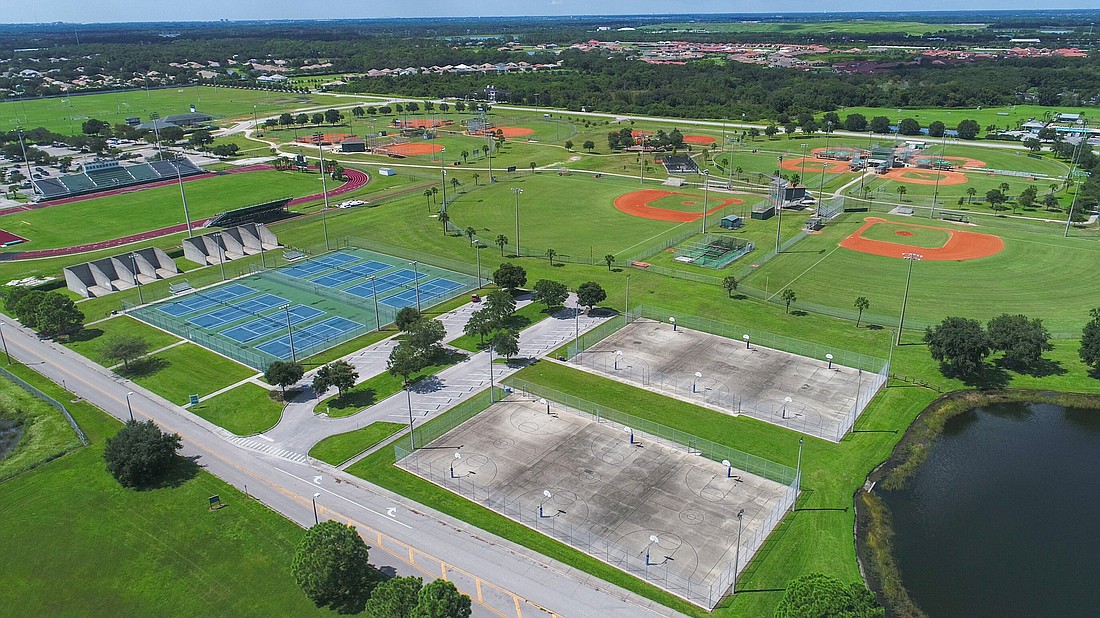- July 26, 2024
-
-
Loading

Loading

A Manatee County technology program is off to a high-flying start.
Manatee County began using drones for certain tasks in May 2019, and Energy and Sustainability Division manager Eric Caplan, who oversees the program, said it has saved the county a "substantial" amount of money. The drone program is run by the Energy and Sustainability Division of the Property Management Department, although a few other departments use them as well. The county owns 15 drones, and 30 employees have become certified pilots.
Though Caplan said the county does not yet have any concrete numbers, a cost-benefit analysis and business case was started over the summer to show exactly how cost-effective the drone program is. The county will use an intern over the first few months of 2021 to help finalize the analysis and will present the findings to the commissioners when the internship program ends in April. The county will continue to update and maintain its analysis once the report is finalized.
The county tends to stay away from top-of-the-market drones, usually buying each for an estimated $1,200 to $1,500. Rather than settle on one specific model, the county has tried out a variety to learn what works best. The Energy and Sustainability Division, for example, has four different types of drones among the six that it operates.
“Not every drone has the ability or the capacity for every single project that we have,” said Hjalmar Pachas, a buildings and facilities technology coordinator within the Energy and Sustainability Division. “One brand will give you the option to have a thermal camera, but the other brands will not.”
To become a certified pilot, county employees have to pass a test administered by the Federal Aviation Administration. When the county first started the program, it brought in a consultant to give the employees formal training. But there’s no uniform training required to take the test. Pachas, for example, trained and studied on his own before passing the test.
The Energy and Sustainability Division uses its drones to do roof inspections and count inventory for irrigation equipment, while other departments use them for tasks ranging from crowd control to search and rescue to damage assessment after storms.
When it comes to roof inspections, the Energy and Sustainability Division uses a drone with a thermal imagery camera. When flown at dusk or nighttime — sunlight can interfere with the imaging — the thermal camera can detect subtle differences in temperature caused by leaks and other forms of water damage.
Caplan said the Property Management Department is always looking for innovative ways to save time and money. In the past, the county would often outsource its roof inspections to another company. So using a drone saves the time of planning and scheduling someone else to do the inspection as well as the cost of paying those inspectors.
But Caplan said the biggest savings come through mitigation. Using the drone and its thermal energy technology, the county can check its roofs for water damage on a much more consistent basis.
Pachas said time and money aren’t the only factors that make the drones a worthwhile investment. Safety is also a consideration. The county doesn’t have to worry about accidents that can happen when people do roof work, meaning there is no possibility of having to file an insurance claim or worker’s compensation.
The drones save even more time when detailing irrigation infrastructure such as sprinkler heads. When people take count, they use a handheld GPS to find each head and take note of how it is working. Depending on how large the field is, it can take up to a day. A drone can simply fly overhead and do the same job in about five minutes.
“If [a director] were to leave, say, Park A, we're able to still know where everything's at for the next person to come in,” Caplan said. “So we don't have to install anything new, we don't have to do any digging up.”
The drones don’t have any recurring costs unless a battery needs replacement or a part is damaged.